58 Photos
Per Page:
Filter Categories
All
Filters
Chuuk Lagoon (formerly Truk Lagoon) is a sheltered body of water in the central Pacific, about 1,800 km north-east of New Guinea. It is part of Chuuk State within the Federated States of Micronesia. The atoll enclosing the lagoon consists of a protective reef, 225 km (140 mi) around, forming a natural harbor 79 by 50 km (49 by 30 mi), with an area of 2,130 sq km (820 sq mi). It has a land area of some 127 square km (49 sq mi). Image courtesy of NASA.

Aerial view of Chuuk Island shows the classic atoll configuration with the barrier reef on the outside exposed to the ocean (bottom) and the lagoon on the inside (top). Image courtesy of NOAA.

Yap (also known as Wa'ab) is located in Yap State of the Federated States of Micronesia. The island of Yap actually consists of four islands joined by a common coral reef. The land is mostly rolling hills densely covered with vegetation. Mangrove swamps line much of the shore. An outer barrier reef surrounds the islands and is visible in this space shuttle photograph. The state has a total land area of 102 sq km (39 sq mi). Image courtesy of NASA.
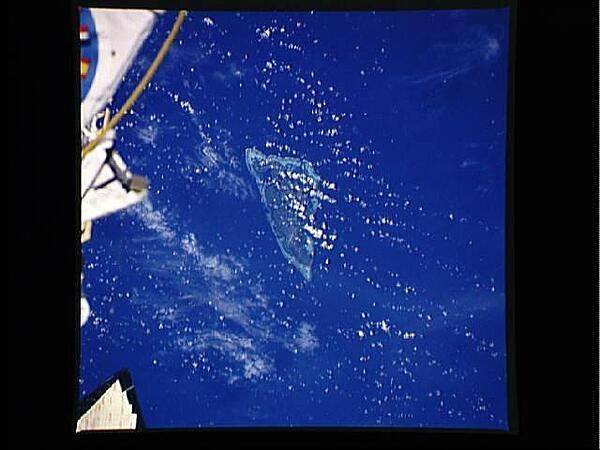
Pohnpei (on the right) is the largest, highest, most populous, and most developed single island in the Federated States of Micronesia. The islanders of Pohnpei have a reputation as being the most welcoming of outsiders among residents of the island group. Pohnpei also contains a wealth of biodiversity and is one of the wettest places on earth with annual recorded rainfall exceeding 7.6 m (25 ft) each year in certain mountainous locations. Image courtesy of NASA.

Classically shaped Nukuoro Atoll is one of 607 islands that make up the Federated States of Micronesia. It is also a municipality of the state of Pohnpei, Federated States of Micronesia. The atoll has a population of only several hundred people. The total area, including the lagoon, is 40 sq km, with a land area of only 1.7 sq km, which is divided among more than 40 islets that lie on the northern, eastern, and southern sides of the lagoon. By far the largest islet is Nukuoro islet in the southeast, which is the center of population and the capital of the municipality. Vegetation is most prominent on the northeast and east portions of the atoll that face the dominant Easterly winds. Swells driven by these winds can be seen approaching from the east-southeast (right) and wrapping around the atoll to produce an interference pattern on the downwind side. Water in the lagoon is calm in comparison. A coral head appears dead center of the photo. Image courtesy of NASA.

The State of Kosrae is the easternmost of the four states that make up the Federated States of Micronesia; it includes the main island of Kosrae and about a dozen nearby islands and islets. The island is located approximately 600 Km (370 mi) north of the equator, between Guam and the Hawaiian Islands. Its land area is approximately 110 sq km (42 sq mi). Image courtesy of NASA.
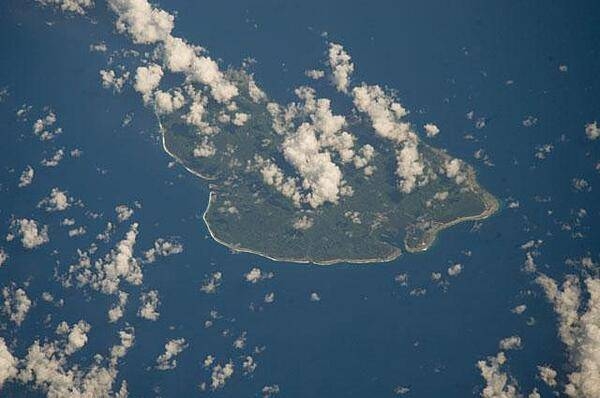
Aerial view of the island of Falalap showing Ulithi Civil Airfield. Photo courtesy of the US Air Force/ Staff Sgt. Alexander Riedel.

Aerial view of Fais Island, Ulithi Atoll. Image courtesy of US Air Force/ Osakabe Yasuo.
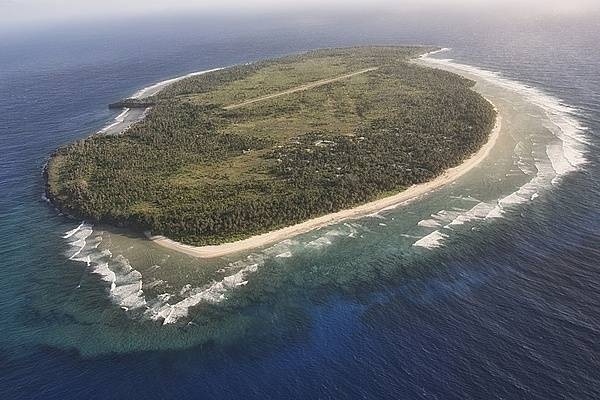
Keprohi (Kepirohi) Waterfall. Fresh-water eels frequent the pool at the bottom of the falls. Photo courtesy of NOAA / Lt. Cmdr. Matthew Wingate.
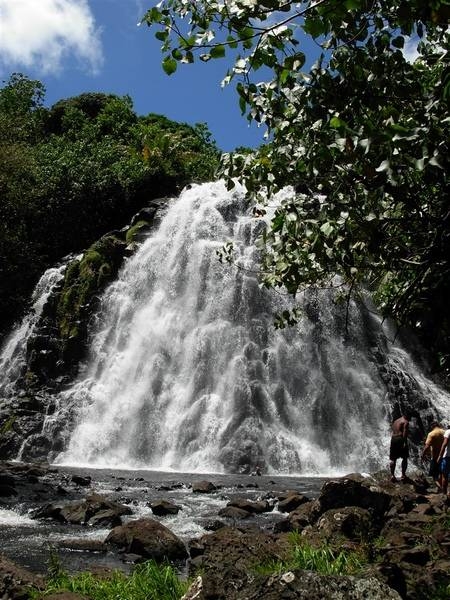
An aerial view of Keprohi Waterfall on the island of Pohnpei. Given the high volcanic topography and heavy rainfall of Pohnpei, there are a number of scenic waterfalls on the island. Image courtesy of the US Air Force/ Tech. Sgt. Tony Tolley.
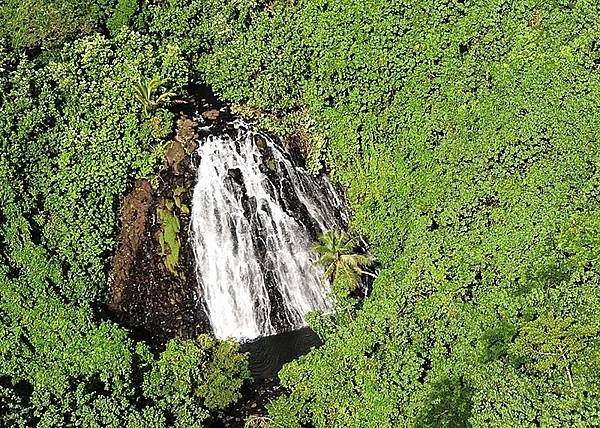
A view of Paipalap Peak (Sokehs Rock) overlooking Pohnpei harbor. The rock, rising over 186 meters, is a basalt volcanic plug. This prominent feature is sometimes referred to as the "Diamondhead" of Micronesia.
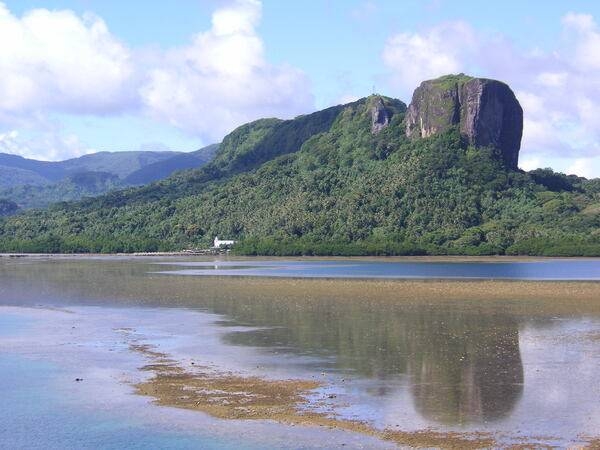
Paipalap Peak (Sokehs Rock) on the island of Pohnpei overlooks the harbor.
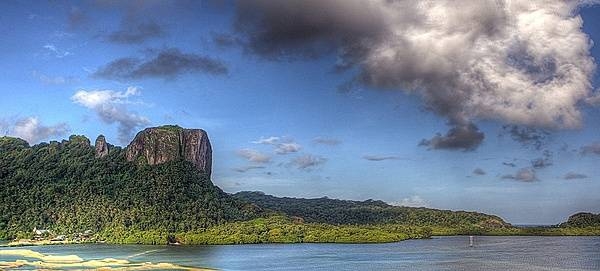
Page 01 of 05